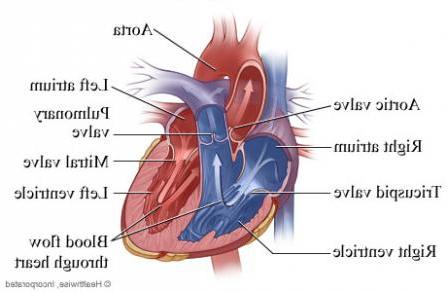This page contains the following sections:
When is repair or replacement of a pulmonary or 三尖瓣 advisable?
How is repair or replacement of a pulmonary or 三尖瓣 accomplished?
What are the risks and benefits of such surgery?
What is involved in a typical recovery?
When is repair or replacement of a pulmonary or 三尖瓣 advisable?
修理或更换 肺动脉瓣 或者是 三尖瓣 比主动脉瓣和二尖瓣的修复或置换更少见吗, your heart's two other valves. Surgery on the 肺动脉瓣 is sometimes performed on a stand-alone basis, 但是对三尖瓣的手术通常只会和其他两个瓣膜中的一个一起进行, 最常见的是 修复二尖瓣.
Both the 肺动脉瓣 and the 三尖瓣 are made up of three little flaps of tissue that control the flow of blood from one part of your circulatory system to another; the flaps are also known as leaflets or cusps. (The term "cusp" comes from a Latin word meaning "point," a reference to the fact that the flaps in both valves are triangle-shaped.)
If you are diagnosed with a damaged pulmonary or 三尖瓣, 你的外科医生会评估你的具体情况,尤其是你的瓣膜受损程度和症状有多严重. 然后就有可能权衡手术的风险与通过改变生活方式和药物治疗来控制疾病的风险. 在大多数情况下, 在因其他原因需要进行心脏手术之前,最好采用非手术治疗. 但在极少数情况下, 考虑对受损的肺动脉瓣或三尖瓣进行独立手术可能是明智的.
无论哪种情况, it is usually preferable to repair rather than replace the damaged valve, because a repaired valve generally results in better heart function, better resistance to infection, and better long- and short-term survival.
Should you and your surgeon decide the time is right for surgery, 记住瓣膜修复和置换手术是我们心脏外科医生的专长. They even have considerable expertise in these less common valve procedures.
How is repair or replacement of a pulmonary or 三尖瓣 accomplished?
你的外科医生将首先确定是否有可能修复你受损的肺动脉瓣或三尖瓣, or whether it must be replaced. There are two primary ways of repairing a damaged valve; these procedures are sometimes performed separately and sometimes in combination:
- Annuloplasty 包括修复皮瓣附着的组织环(这个环被称为环), by attaching a ring of tissue, 布或金属.
- 切除 involves trimming and/or reshaping the flaps themselves.
If it is necessary to replace rather than repair the valve, there are two primary kinds of replacement valves. 你的年龄和整体健康状况等因素会影响哪种方式最合适:
- 机械阀门 是由非常耐用的人造材料制成的,比如钛、碳、聚酯、涤纶或特氟龙. They are typically very long-lasting; however, 使用机械瓣膜通常需要患者终生服用血液稀释药物(通常指的是香豆素的品牌名称).
- 生物瓣膜, also known as tissue valves or bioprosthetic valves, 是由动物组织制成的吗, 通常来自猪或牛. They do not usually necessitate the use of blood-thinning medication; however, biological valves typically last only 10 to 20 years, so a second valve replacement operation may be required in the future.
因为肺动脉瓣或三尖瓣的手术几乎总是与其他心脏手术一起进行, usually a 修复二尖瓣, 手术的要求通常决定了哪种手术方式是最好的. 开胸手术 is the most common option for 二尖瓣修复s, 但你的外科医生会根据你的具体情况决定以下哪一种手术最合适:
- 开胸手术 involves making a 7- to 9-inch incision over the middle of the sternum, 或胸骨, then dividing the sternum to allow access to the heart. 在某些情况下,可能采用侵入性较小的选择,包括稍小的胸骨切口. Then the damaged valve is either repaired or replaced. It will be necessary to stop your heart from beating during the procedure, so the operation can be performed on a motionless and bloodless field; while your heart is stopped, 一种被称为心肺旁路机的设备将接管你的心脏功能并维持血液循环.
- 微创手术 包括在你的胸部侧面做一个或两个小得多的切口(通常是2到4英寸), 在你的肋骨之间. Then the procedure is performed by inserting a tiny camera and long, thin surgical instruments through your tissues to the damaged valve. 微创手术也需要使用心肺搭桥机. Although it is typically not the preferable option for valve repairs, 在适当的情况下,这种方法避免了劈开胸骨和打开整个胸部的需要, 因此,复苏可能会更快.
What are the risks and benefits of such surgery?
重要的是要记住,每一个医疗选择都涉及风险和收益之间的权衡——无论是接受手术, 服药, 或者甚至只是仔细监控一种情况(一种被称为“观察等待”的选择)。.
In the case of surgery on a damaged pulmonary or 三尖瓣, 决定手术是否明智,需要权衡任何心脏手术所涉及的风险,以及继续使用药物和其他非手术治疗可能导致心脏和循环系统进行性损害的风险.
The risks involved in surgery are quite low. 由于肺动脉瓣或三尖瓣手术通常与另一种外科手术同时进行, 总体风险通常与正在执行的任何其他程序相同-通常是a 二尖瓣修复,但有时 二尖瓣置换术 或者一个 aortic valve repair or replacement.
The benefits of successful surgery are considerable. The overwhelming majority of patients, 一旦他们恢复, feel better than they did before the operation, experience relief of their symptoms, and are able to resume any activities they wish to engage in. 在大多数情况下,成功的瓣膜手术也会提高生存率.
What is involved in a typical recovery?
A typical open-heart procedure takes from 4 to 6 hours, in some cases up to 8 hours; patients are then maintained under general anesthesia f或者一个 additional 4 to 6 hours. If their heart is performing well and there is no excess bleeding, they can emerge from anesthesia and have their breathing tube removed. Most patients stay in the ICU until midday of the day after their procedure; if they continue to do well, 然后可以移除胸腔中的引流管,当天晚些时候可以将他们转移到普通的医院病床上.
The typical hospital stay ranges from 4 to 7 days. 在这一点上, the vast majority of patients are able to go home, with support from the visiting nurse service, 虽然大约15%到20%的人可能需要在康复机构花一些时间进行更广泛的康复. 出院后, 建议患者在三周内不要开车,在六周内不要举起超过5磅的东西. Beyond that point, they can resume whatever activities they wish to.
病人 tend to be surprised at how easy it is to control their pain. By the second day after their operation, most patients are comfortable without intravenous pain medication, 只服用口服止痛药, and the overwhelming majority are discharged home on just Tylenol or Motrin.
In cases when minimally invasive surgery is appropriate, 手术时间和恢复期通常都较短.
Page reviewed on: Jun 26, 2018
Page reviewed by: Jock McCullough, MD
